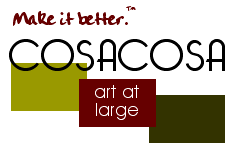



Why should there be public funding for arts and culture? This is a question perhaps only asked by those wild-eyed folk who don’t like taxes in any form. A more common question in today’s climate is, can we afford such support?
And the simple answer is, we can’t afford not to. When has there ever not been public funding of the arts in some form? Moreover, why would a government – whether a Renaissance principality or a modern democracy – fund the arts unless it understood the clear benefits of doing so?
Renaissance princes were aware of the ‘soft power’ art gave them. Grand Duke Francesco I lacked much of an army, so when he needed to impress the Court of Dresden, he sent over a collection of bronzes by Giambologna instead. Lorenzo the Magnificent supported Botticelli, Michelangelo and Leonardo da Vinci, and ‘lent out’ Florentine artists as part of his diplomatic strategies (much as the British Council does today, by the way). Renaissance patrons liked to get full value for their funding, and Leonardo was used by the Sforza of Milan to sculpt marzipan figures for banquets in a sort of Renaissance ‘bake-off’. The English court was also a centre of artistic patronage. Henry VIII cultivated musicians, much as Frederick the Great of Prussia did later, to promote a favourable public image. Charles I championed Inigo Jones and Van Dyke and amassed one of the great art collections, which, in an early nod to regional rebalancing, was sold by Parliament at a knock-down price ‘for the benefit of Ireland and the North’. Charles II poured money into the theatre, with a glad eye, of course. Even William III, with his military mind, rewarded Swift’s satire with a captaincy of horse.
By the Victorian era, artistic patronage was no longer the taste of the aristocrat or the monarch. Its strategic significance was recognised after the Great Exhibition of 1851, when the poor quality of British contributions led to the creation of the Department of Science and Art. More than a million pounds was invested in the South Kensington Museum, later the V&A, as part of a national programme to develop the skills of design and drawing necessary to Britain’s industrial future – an early example of how arts and culture lie at the heart of commercial creative endeavour. There are countless other examples. In one form or another, there has always been state or public funding for the arts. Some of it may have been quixotic or whimsical, but in the main it derived from a calculation of the potential benefits.
Since the Second World War, Britain has had a mixed funding model for the arts, in which government money works alongside private contributions and earned income. It has been a success; it preserves a balance between creative ambition and economic viability. It encourages talent; it promotes resilience.
By and large, this model has been supported by all political parties. In the 1960s Jennie Lee, during her term as Minister for the Arts, defined how local authorities should support local arts. In 1990, under the hard-nosed administration of Margaret Thatcher, public arts funding began to increase significantly once more. Within a few years, John Major would launch the National Lottery, leading to a remarkable revival of the arts infrastructure. Under the subsequent Labour administration, arts funding peaked after the Millennium. Since I became chair of the Arts Council in 2013, I have been describing how public investment brings public benefit and arguing that it is critical the balance of that mixed funding model is maintained. There is a powerful holistic case for public investment in arts and culture – holistic in the sense that all the benefits are interrelated and need to be considered together...
The arts are integral to our communities, our education, our health and wellbeing, and our national standing – and how public investment in the arts is returned many times over. The arts define our culture, our identity and our national conversation. And now there is a growing understanding that the arts and culture sector fuels tourism, urban regeneration and our rapidly growing creative economy. The holistic case is an argument for public funding. But our mixed funding model also depends on the farsighted generosity of individuals, businesses, charities and trusts. In an era of austerity, with its particular impact on local authority funding, we have had to look increasingly to these contributions.
There will be new ways of public funding through social investment. There will be new ways of sharing great art and culture via digital distribution. But the fundamental truth will endure: something that is of the public and for the public should always merit public support.
Peter Bazalgette is Chair of Arts Council England. This essay originally appeared in the November 2014 issue of Create, a journal on the value of arts in culture.